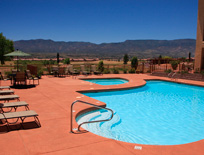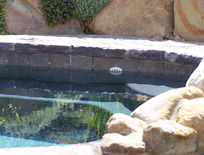ARTICLES
Advance Search
Aquatic Health
Aquatic Health, Fitness & Safety
Around the Internet
Aquatic Culture
Aquatic Technology
Artful Endeavors
Celebrity Corner
Life Aquatic
Must-See Watershapes
People with Cameras
Watershapes in the Headlines
Art/Architectural History
Book & Media Reviews
Commentaries, Interviews & Profiles
Concrete Science
Environment
Fountains
Geotechnical
Join the Dialogue
Landscape, Plants, Hardscape & Decks
Lighter Side
Ripples
Test Your Knowledge
The Aquatic Quiz
Other Waterfeatures (from birdbaths to lakes)
Outdoor Living, Fire Features, Amenities & Lighting
Plants
Ponds, Streams & Waterfalls
Pools & Spas
Professional Watershaping
Structures (Editor's Notes)
Travelogues & History
Water Chemistry
WaterShapes TV
WaterShapes World Blog
Web Links
Around the Internet
Aquatic Culture
Aquatic Technology
Artful Endeavors
Celebrity Corner
Life Aquatic
Must-See Watershapes
People with Cameras
Watershapes in the Headlines
There’s no way around the fact that volatile organic compounds (VOCs) are nasty stuff. They smell bad, they are highly flammable, they damage the atmosphere and they can be acutely toxic to human and other living beings. At the same time, however,
Automation of some kind is standard with most swimming pool projects these days. Almost every project my company does, for instance, now includes an Aqualink system from Jandy (Vista, Calif.) or something similar. These systems feature a panel in the equipment area that controls
Compiled and written by Lenny Giteck Woman Pleads Guilty in BizarreSwimming-Pool-for-Murder Plot Ripples notes with astonishment the case of an Indiana woman who offered her used aboveground swimming pool (plus $200 "in gas money") as payment to kill her
Note: This book review was first published in the November 2008 issue of WaterShapes. Given what has happened in the economy since then, we think the book is just as relevant today as it was then — perhaps even more so. As 2008 draws to a close, it’s apparent that we are
Interview by Eric Herman Through the past quarter-century, Skip Phillips - owner of Questar Pools in Escondido, Calif., and one of the founders of The Genesis 3 Design Group - has served as an expert witness in more than 300 lawsuits involving pool construction. He estimates that
Do you really know the difference between grounding and bonding? If you do, great. But the truth is that most people — including lots of construction-oriented watershapers who should know better — do not understand this fundamental distinction, which is why this
You hear it all the time these days: Now is the time to improve all aspects of what you do for a living. I’ve taken that message to heart and, in striving to upgrade all facets of my work as a watershaper, have come to a somewhat shocking realization: For all of the countless presentations I’ve made to clients, I’ve never taken a critical, disciplined look at that part of my job. In college, of course, I was forced to make presentations about class projects, but the focus was always on the design and not on the presenting. Indeed, my instructors reinforced the point that it wasn’t how you presented ideas, but instead the
Part I: Setting the Course Theatrical vitality has to do with structuring stories and creating dramatic narratives that establish sensations of expectation, surprise and reward. It also involves the development of sympathetic, interesting characters as well as engagement in “the moment” – the feeling that a special and wonderful entertainment experience is unfolding before the audience in a specific time and place. Mastering all of that is a tall order under ordinary circumstances, so you can imagine how we felt in trying to help make it happen on the exposed, unpredictable stern deck of Oasis of the Seas – a prestigious ship that currently claims the title of world’s largest cruise liner. Fluidity – a Los Angeles-based water design studio – pursues unique, progressive projects for an international clientele that includes architects, landscape architects, civic institutions and real estate developers. Through the years, we’d had considerable experience with theatrical
Decorative-concrete artist Tommy T. Cook has built a reputation for being able to create almost anything from concrete using an array of highly refined and boldly artful processes. In this feature, he demonstrates a portion of that skill by describing how he uses the gargantuan Gunnera plant to craft watershapes in which replicas of the plant’s outsized leaves serve as uniquely natural fountain basins and spillways. Ask anyone who’s tried and it’s almost certain you’ll hear that replicating nature isn’t easy. That hasn’t stopped artists throughout history from trying, however, or from making natural forms an influential source of artistic imagination and ambition. The great thing about using nature for inspiration is that it’s all around us and all we need to do to draw on it is open our eyes, make good choices and decide how what we see can be used in our creative endeavors. In my case, I’d worked in decorative concrete for a long time before nature crawled under my skin. It began when
There’s no denying the difficulty of building a high-quality inground pool, but the welcome fact is that the earth can conceal a range of little imperfections, from small leaks to minor structural defects. When you build a pool or some other watershape above grade as an integral component of a multi-story building, however, everything you do is magnified because the work is always exposed. Essentially, you lose the margin for error that might be possible with an inground installation. This past spring, work was completed on two high-rise watershapes our firm engineered as part of L.A. Live, a multi-purpose, entertainment-oriented complex situated near the Staples Center and the Los Angeles Convention Center in downtown Los Angeles. The pool/spa combinations were placed on the fourth and twenty-sixth floors, and although they have simple rectangular forms, they represent the absolute






















